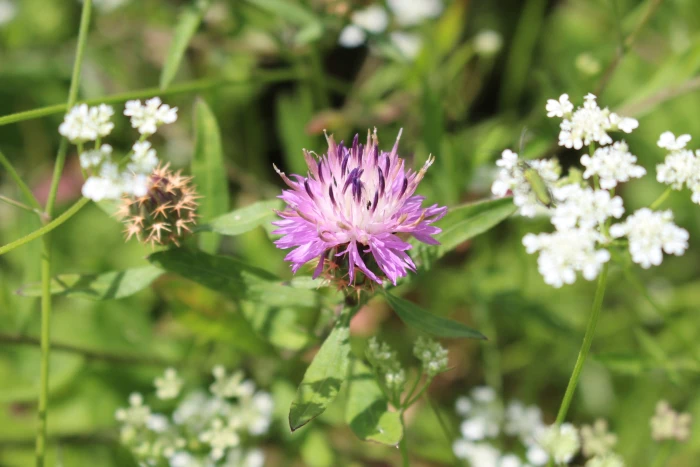Rough Star-Thistle
(Centaurea aspera)
Rough Star-Thistle (Centaurea aspera)
/
/

© Fabien Piednoir
CC BY-SA 4.0
Image By:
© Fabien Piednoir
Recorded By:
Copyright:
CC BY-SA 4.0
Copyright Notice:
Photo by: © Fabien Piednoir | License Type: CC BY-SA 4.0 | License URL: http://creativecommons.org/licenses/by-sa/4.0/ | Uploader: fabienpiednoir | Publisher: iNaturalist |

























Estimated Native Range
Climate Requirements for Ankeny, Iowa
| This Plant | Your Site | Plant Suitability for Your Location | ||
|---|---|---|---|---|
| • Precipitation | 22" - 27" | 34" | Your precipitation may be too high for this plant. | Too high |
| • High Temp. | 76°F - 89°F | 86°F | Your summer temperatures are normal for this plant. | Excellent |
| • Low Temp. | 31°F - 41°F | 10°F | Your winter temperatures may be too cold for this plant | Too cold |
This plant may not grow well at your location - your precipitation is too high.
Summary
Centaurea aspera, commonly known as Rough Star-Thistle, is a perennial herb that is native to the Mediterranean region, including Southern Europe, Northern Africa, and parts of Western Asia. It typically inhabits dry, open habitats such as grasslands, roadsides, and disturbed areas. This species is characterized by its spiny, thistle-like appearance with a typical height of 1-3 feet (30-90 cm) and a similar width. The Rough Star-Thistle produces purple or pinkish flower heads from late spring to early fall, which are surrounded by spiny bracts, giving the plant a formidable look. The flowers are moderately showy and attract a variety of pollinators.
Rough Star-Thistle is known for its drought tolerance and ability to thrive in poor, well-drained soils, making it a low-maintenance choice for xeriscaping and naturalistic plantings. However, due to its invasive potential, it is not recommended for cultivation outside its native range. In areas where it is not invasive, it can be used for erosion control or as part of a wildlife garden. It requires full sun exposure and minimal water once established. There are no popular garden cultivars due to its invasive nature and potential to outcompete native vegetation. Gardeners should be aware of its aggressive self-seeding and the difficulty of removing it due to its deep taproot.CC BY-SA 4.0
Rough Star-Thistle is known for its drought tolerance and ability to thrive in poor, well-drained soils, making it a low-maintenance choice for xeriscaping and naturalistic plantings. However, due to its invasive potential, it is not recommended for cultivation outside its native range. In areas where it is not invasive, it can be used for erosion control or as part of a wildlife garden. It requires full sun exposure and minimal water once established. There are no popular garden cultivars due to its invasive nature and potential to outcompete native vegetation. Gardeners should be aware of its aggressive self-seeding and the difficulty of removing it due to its deep taproot.CC BY-SA 4.0
Plant Description
- Plant Type: Herb
- Height: 1-3 feet
- Width: 1-1.5 feet
- Growth Rate: Moderate
- Flower Color: Pink, Purple
- Flowering Season: Spring
- Leaf Retention: Semi-deciduous
Growth Requirements
- Sun: Full Sun
- Water: Low
- Drainage: Medium, Fast
Common Uses
Drought Tolerant, Low Maintenance
Natural Habitat
Native to the Mediterranean region, including Southern Europe, Northern Africa, and parts of Western Asia in dry, open habitats such as grasslands, roadsides, and disturbed areas
Other Names
Common Names: Spiny Centaury, Star Thistle
Scientific Names: Centaurea aspera, Centaurea aspera var. aspera, Centaurea aspera var. parcespinosa, Centaurea aspera var. praetermissa, Centaurea parviflora
GBIF Accepted Name: Centaurea aspera